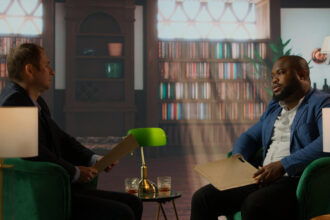When it comes to landing your dream job or making a memorable professional connection, the first impression you leave often matters more than any document you submit. While resumes play a crucial role in showcasing your skills and experience, they are just one piece of a larger puzzle. The way you present yourself, communicate, and interact in those initial moments can significantly influence how others perceive your potential.
Understanding and mastering the art of creating a positive first impression goes beyond formatting your resume perfectly. It involves honing interpersonal skills, body language, and professional demeanor to ensure that you stand out in competitive environments. This post delves into why the first impression is so vital and how you can optimize every encounter for success.
Why First Impressions Are So Powerful
Human psychology is wired to form rapid judgments. In fact, studies show that people decide whether they like or trust someone within seconds of meeting them. This snap judgment, or first impression, often sets the tone for all subsequent interactions. It shapes opinions, influences decisions, and can even override detailed information, like qualifications or experience.
In the professional world, this means that no matter how impressive your resume is, if your first impression is weak or unprofessional, your chances of advancing may be compromised. Employers and colleagues alike are influenced by the intangible qualities they observe—confidence, enthusiasm, and authenticity play a major role in shaping perceptions. This is why mastering the initial moments of interaction is key to unlocking opportunities.
Beyond the Paper: The Many Facets of First Impression
A resume is a static document that offers a snapshot of your career history. However, the first impression you make is multi-dimensional, encompassing verbal communication, appearance, and even your digital footprint. In today’s digital age, online profiles, email correspondence, and social media activity all contribute to how people perceive you before you even meet.
Furthermore, non-verbal cues such as eye contact, posture, and tone of voice communicate volumes about your confidence and professionalism. These subtle signals can either reinforce or contradict the story your resume tells. Mastering these facets ensures that every interaction—whether virtual or face-to-face—projects the best version of yourself.
Preparing for the Moment: How to Build a Positive First Impression
Preparation is the cornerstone of making a strong first impression. Start by understanding your audience and tailoring your communication accordingly. Research the company culture, the role requirements, and the people you’ll be interacting with to customize your approach effectively.
Practicing clear, concise communication is essential. This means being able to articulate your value proposition confidently without over-explaining or underselling yourself. Additionally, investing time in grooming, dressing appropriately, and maintaining positive body language will reinforce your professionalism. Remember, preparation extends beyond your resume; it’s about crafting a comprehensive image that resonates positively.
The Role of Emotional Intelligence in First Impressions
Emotional intelligence (EI)—the ability to recognize and manage your own emotions while empathizing with others—plays a pivotal role in shaping first impressions. Individuals with high EI are often more adept at reading social cues and responding thoughtfully, which helps in building rapport quickly.
During initial interactions, demonstrating empathy, active listening, and genuine interest can make you more approachable and trustworthy. These qualities foster a connection that transcends transactional exchanges and leaves a lasting positive impression. Developing your EI can be a game-changer, especially in roles that require teamwork or client interaction.
Leveraging Technology: Digital First Impressions Matter Too
In the modern job market, your digital presence often precedes your physical one. Hiring managers and recruiters regularly scan LinkedIn profiles, professional portfolios, and social media accounts before reaching out. A polished, professional online presence can significantly enhance your first impression even before an interview.
Ensuring consistency across platforms, using professional photos, and curating content that reflects your expertise are critical steps. Equally important is managing privacy settings and removing anything that could be perceived as unprofessional. Remember, your digital footprint is a reflection of your personal brand, and it can either open doors or close them.
Overcoming Common First Impression Mistakes
Even the best candidates can falter in making a positive first impression. Common pitfalls include poor punctuality, lack of eye contact, weak handshakes, and distracted behavior such as checking phones during conversations. These seemingly small actions can convey disinterest or unreliability.
Awareness and mindfulness are key to avoiding these errors. Arrive early, maintain engaging eye contact, offer a firm handshake, and stay fully present in conversations. Practicing these behaviors regularly helps build habits that consistently reinforce your professionalism and reliability.
How to Recover When First Impressions Falter
Sometimes, despite your best efforts, a first impression might not go as planned. The good news is that first impressions are not set in stone. You can recover by demonstrating competence and integrity through your subsequent actions.
Follow-up communication is a powerful tool here. Sending a thoughtful thank-you note, providing additional information, or politely clarifying any misunderstandings can help reshape perceptions. Over time, consistent professionalism and positive contributions will reinforce your true value, helping to overcome initial missteps.
Conclusion: The Lasting Impact of a Strong First Impression
While a resume is an essential part of your professional toolkit, the ability to make a compelling first impression often determines whether you get noticed, remembered, and ultimately selected. It encompasses far more than just what’s written on paper—it involves how you present yourself, communicate, and connect with others.
Investing time and effort into mastering the nuances of first impressions will pay dividends throughout your career. From job interviews to networking events, every encounter is an opportunity to showcase your best self. Remember, in the world of professional success, your first impact can set the trajectory for your future.









